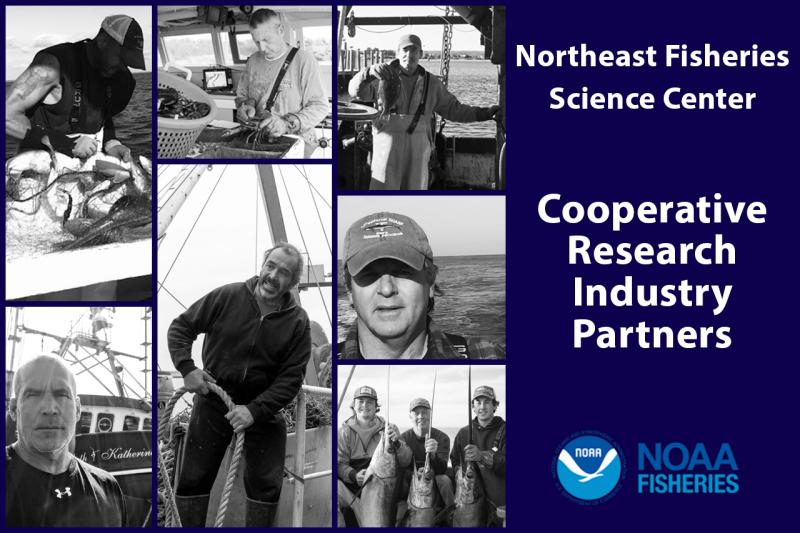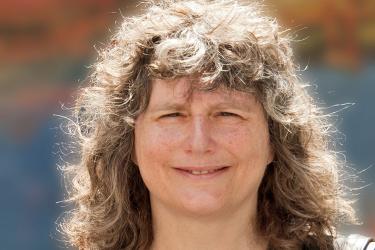The Northeast Fisheries Science Center works with our region’s commercial fishing community to collect data that help us better understand ocean ecosystems and improve fisheries management. Their partnership is critical to the future of sustainable fisheries in our region. It helps us feed data-hungry climate models, estimate fishing effort and catch, and understand potential conflicts with wind energy areas. Here are just a few of our commercial fishing partners helping to make that happen.
As a bonus, we asked our commercial fishing partners to share their best seafood tips. Cooking seafood at home can be tricky, but with their tips, you’ll find it a lot easier and stress free!
Stephen Arnold
Snapshot Bio
Stephen is the owner and operator of the F/V Elizabeth & Katherine based out of Point Judith, Rhode Island. He fishes the waters off Southern New England and has been participating in our Study Fleet Program since 2008.
What Stephen Fishes
- Longfin squid
- Scup
- Butterfish
- Silver hake
- Monkfish
- Winter skate
- Bluefish
- Sea scallops
- Groundfish species, including yellowtail flounder, winter flounder, summer flounder, and Atlantic cod
How Stephen Gets His Catch to Market
Before COVID-19, Stephen sold his catch directly to restaurants in Rhode Island. Now, he sells his catch to Seafreeze Shoreside, a local seafood dealer in Narragansett, Rhode Island.
Stephen’s Seafood Tips
- For me, fresh-caught fish is best.
- For the best quality fish, purchase seafood directly from vessels or from reputable seafood markets.
- For short term storage, place seafood in an airtight container and store in the refrigerator for no more than a day.
- For longer storage, you can freeze it, but don’t leave it in the freezer for more than 5 months.
Tony Borges
Snapshot Bio
Tony is the owner and operator of the F/V Sao Paulo based out of New Bedford, Massachusetts. He fishes offshore from the Gulf of Maine to Virginia and has been participating in our Study Fleet Program since 2010.
What Tony Fishes
- Groundfish, including haddock, winter flounder, witch flounder, summer flounder, monkfish, American lobster, and skates
- Longfin squid
How Tony Gets His Catch to Market
Most of Tony’s fish is sold to Bergies Seafood, Inc.—a processor and wholesale company based in New Bedford, Massachusetts.
Tony’s Seafood Tips
- When purchasing fish, it should be firm and look appealing. There should be no odor.
- In recipes calling for halibut, you can use fluke as a substitute. It’s really the next best thing. The meat holds up well and it’s a good fish to cut into chunks or fillet.
- Monkfish is another one of my favorites. It's very easy to work with because it has no small bones in the part we eat, just a spinal cord, making it a great fish for kids. They love it.
- If you're battering and frying fish, you can’t beat halibut.
Bill Bright
Snapshot Bio
Bill is the owner and operator of the F/V Defiance based out of Cape May, New Jersey. He also owns Hooked Up Seafood—a Jersey-fresh, family-owned and -operated restaurant. He fishes the waters off the mid-Atlantic from New York to Cape Hatteras, North Carolina. Bill is a research partner on projects involving shortfin squid habitat and instrument testing for the Cooperative Research Branch and our Sandy Hook Lab.
What Bill Fishes
- Swordfish
- Bluefin tuna
- Mahimahi
How Bill Gets His Catch to Market
Before COVID-19, Bill was selling his catch through his family-run restaurant, Hooked Up Seafood, as takeout and outdoor dining. While they have since closed their restaurant doors, they’re excited to announce their next project, Hooked Up Marketplace. Their mission is to provide the highest quality seafood, locally sourced and responsibly caught, to local markets and restaurants. They hope to simultaneously preserve local fisheries and support family-run operations.
Bill’s Seafood Tip
- Don’t overcook it.
Al Eagles
Snapshot Bio
Al is the captain of the F/V Catherine Ann based out of Newport, Rhode Island and fishes the waters off Southern New England. He’s a member of Eating with the Ecosystem's Advisory NETwork. He’s participating in the Lobster and Jonah Crab Research Fleet, organized by the Commercial Fisheries Research Foundation. We provided funding to the Atlantic States Marine Fisheries Commission to support the research fleet’s work to install temperature sensors on lobster traps. Once a bycatch fishery, Jonah crab landings have increased in recent years. This has created an urgent need to collect more biological and fishery data to support the development of a stock assessment for this species. The growth of this fishery provides lobstermen with an important opportunity to diversify their fishing portfolio. This will allow them to adapt in the face of declining Southern New England lobster populations.
What Al Fishes
How Al Gets His Catch to Market
Al sells wholesale directly through his company, Ace Lobster Co., Inc. and to consumers through Newport Lobster Shack.
Al’s Seafood Tips
- I prefer my lobsters steamed rather than boiled. I think most people do not realize that a majority of lobster restaurants steam lobsters rather than boil them.
- To steam a lobster, get a large enough pan and add about an inch of water. Heat the water to when it starts steaming and add the lobster. When the shell turns a bright orange color and the tail separates from the body, it is finished cooking. This usually takes about 8-10 minutes.
- I think soft-shell lobsters are tastier compared to hard-shell lobsters—the meat is sweeter and tender. While the claws may not be full of meat, the tail is full. My wife and I prefer our lobsters this way.
- Lobsters shed their shells in the summer and that’s your best opportunity to buy them from local fishermen.
Doug Feeney
Snapshot Bio
Doug is the owner and operator of the F/V Noah based out of Chatham, Massachusetts. He’s also a member of the Chatham Harvesters—A Fishermen’s Cooperative and a member of Eating with the Ecosystem's Advisory NETwork. He fishes the waters just off Cape Cod and on George’s Bank and has been participating in our Study Fleet Program since 2016.
What Doug Fishes
How Doug Gets His Catch to Market
Doug is one of the commercial fishermen who supplies Red’s Best. He also does direct sales through Chatham Harvesters—A Fishermen’s Cooperative that helps supply schools, hospitals, and prisons with fresh sustainably harvested fish.
Doug’s Seafood Tips
- Fish shouldn't smell “fishy” and the flesh shouldn’t look yellow
- When shopping at fish markets and chain stores, ask questions like where their seafood comes from, how it was harvested, and if it’s sustainable.
- Overseas fish are frozen and not as fresh. It’s always good to determine the origin of your seafood and look for mislabeling.
- Support small vessels that can fish cleaner and have a better product.
- Do some research on where seafood comes from and check out FishWatch.
Rodman Sykes
Snapshot Bio
Rodman is the owner and operator of the F/V Virginia Marise based out of Point Judith, Rhode Island. He’s also a member of Eating with the Ecosystem's Advisory NETwork. He fishes the waters off Southern New England and has been participating in our Study Fleet Program since 2008.
What Rodman Fishes
How Rodman Gets His Catch to Market
Most of Rodman’s catch is sold directly to Dave Handrigan Seafood Inc. in North Kingstown, Rhode Island, who uses their distribution channels to sell fish. The skates Rodman catches are sold to The Bait Company in Narragansett, Rhode Island, to be used by lobstermen for bait. He also sells to Champlin’s Seafood in Narragansett, Rhode Island for their restaurant and seafood shop.
Rodman’s Seafood Tips
- Have a good relationship with your fish market and ask questions about the origin of seafood you’re purchasing.
- Smell the fish. It’s a great indicator of freshness. “Off” odors are an indication that a fish is past its peak freshness and is beginning to go bad.
- When out dining at a restaurant, it’s always a great idea to ask about the origin of the seafood on the menu—you’ll learn a lot about your food by asking questions.
Kevin Wark
Snapshot Bio
Kevin is the owner and operator of the F/V Dana Christine II based out of Barnegat Light, New Jersey. He fishes the waters off the mid-Atlantic, including New York Bight, and has been participating in our Study Fleet Program since 2012.
What Kevin Fishes
How Kevin Gets His Catch to Market
Kevin sells to Viking Village Inc.
Kevin’s Seafood Tip
- Monkfish is easy to work with if you cube it out.
- Small pieces can be battered and fried or skewered with vegetables and grilled.
For more information, please contact Heather Soulen or Giovanni Gianesin.










